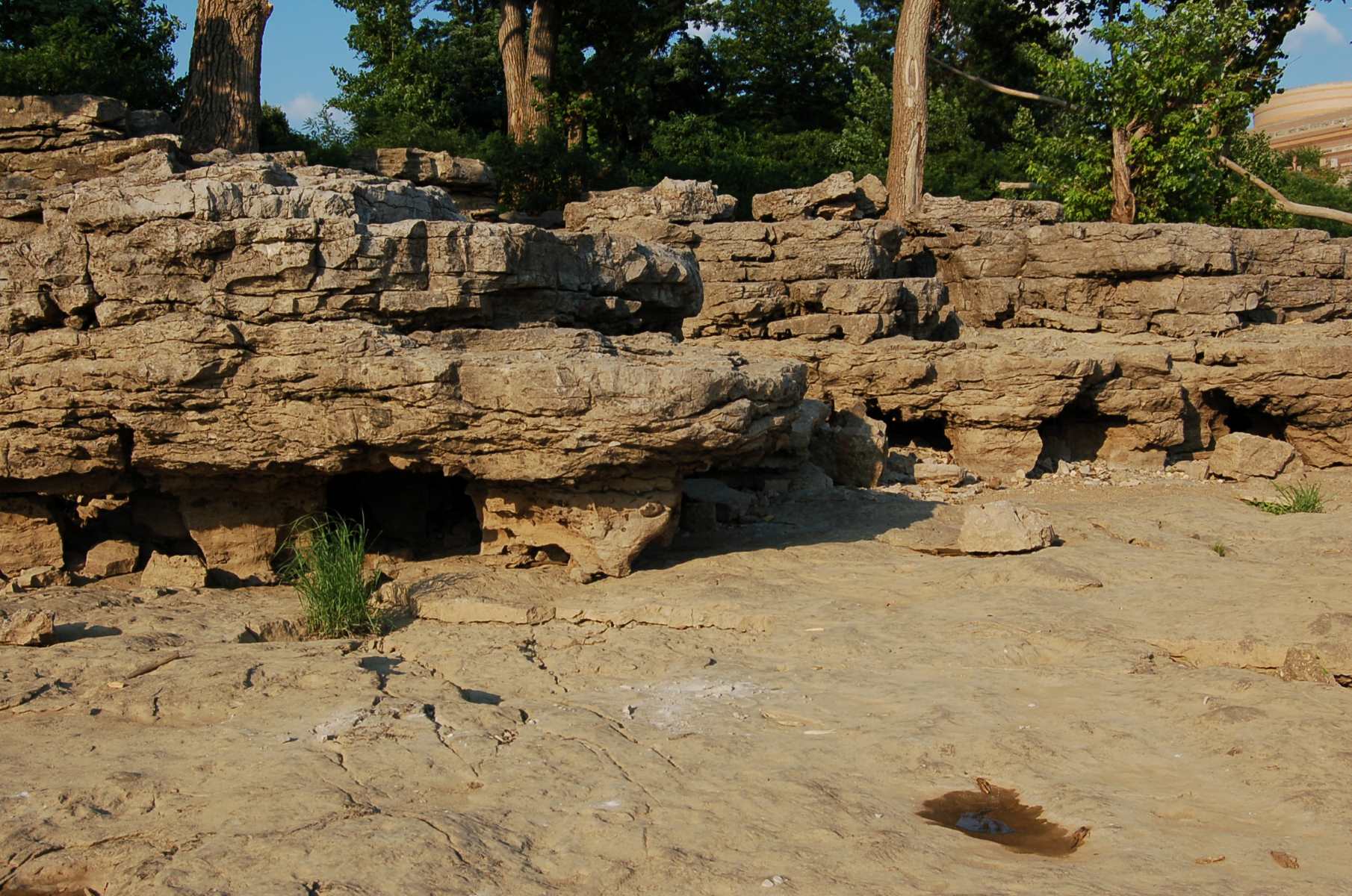Hidden Fossil Shell Reefs Of The Falls Of The Ohio

Have you ever wondered where you can find ancient marine life without diving into the ocean? The Falls of the Ohio State Park offers a unique glimpse into the past with its hidden fossil shell reefs. Located on the banks of the Ohio River, this park is home to one of the largest naturally exposed fossil beds in the world. These fossil reefs date back 386 million years, showcasing a time when the area was covered by a shallow sea. Whether you're a budding paleontologist or just curious about Earth's history, the Falls of the Ohio provides an unforgettable experience.
Discovering the Hidden Fossil Shell Reefs
The Falls of the Ohio State Park, located on the banks of the Ohio River, is a treasure trove for fossil enthusiasts. This area is home to some of the most fascinating fossil shell reefs, dating back millions of years. Let's dive into some of the most intriguing spots to explore these ancient wonders.
1. The Coral Gardens
The Coral Gardens is a must-visit for anyone interested in marine fossils. This area showcases a variety of coral fossils that once thrived in a shallow sea.
- Location: Near the Interpretive Center
- Highlights: Large coral heads, intricate patterns, and diverse species
- Best Time to Visit: Spring and fall when the water levels are lower
2. The Brachiopod Beds
Brachiopods, marine animals with hard shells, are abundant in this section of the park. These fossils offer a glimpse into the ancient marine ecosystem.
- Location: West of the Coral Gardens
- Highlights: Well-preserved shells, various species, and detailed structures
- Best Time to Visit: Early morning for the best light
3. The Crinoid Fields
Crinoids, also known as sea lilies, are fascinating marine creatures that resemble plants. Their fossilized remains create stunning patterns on the rock surfaces.
- Location: East of the Interpretive Center
- Highlights: Star-shaped fossils, intricate stem segments, and diverse species
- Best Time to Visit: Late afternoon when the sun highlights the fossils
4. The Trilobite Terrace
Trilobites, ancient marine arthropods, are some of the most sought-after fossils. Trilobite Terrace is the perfect spot to find these prehistoric creatures.
- Location: South of the Coral Gardens
- Highlights: Complete trilobite fossils, various sizes, and detailed exoskeletons
- Best Time to Visit: Midday when the sun is high
5. The Bryozoan Bluff
Bryozoans, colonial marine animals, form intricate lattice-like structures. Bryozoan Bluff offers a unique opportunity to see these delicate fossils up close.
- Location: North of the Brachiopod Beds
- Highlights: Delicate lace-like patterns, various colony shapes, and well-preserved specimens
- Best Time to Visit: Late morning for optimal lighting
6. The Ammonite Alcove
Ammonites, extinct marine mollusks, are known for their spiral shells. Ammonite Alcove is a hidden gem where these beautiful fossils can be found.
- Location: Near the Crinoid Fields
- Highlights: Spiral shells, varying sizes, and detailed suture patterns
- Best Time to Visit: Early afternoon when the sun illuminates the fossils
7. The Gastropod Grotto
Gastropods, or snails, are common in the fossil record. Gastropod Grotto is an excellent spot to find these ancient creatures.
- Location: West of the Trilobite Terrace
- Highlights: Coiled shells, various species, and well-preserved details
- Best Time to Visit: Mid-morning for the best visibility
8. The Cephalopod Cove
Cephalopods, including squids and octopuses, have left behind fascinating fossils. Cephalopod Cove is a prime location to find these ancient marine animals.
- Location: South of the Bryozoan Bluff
- Highlights: Chambered shells, intricate patterns, and diverse species
- Best Time to Visit: Late afternoon for the best lighting
9. The Stromatoporoid Shelf
Stromatoporoids, sponge-like marine organisms, create unique fossil formations. The Stromatoporoid Shelf is a fantastic place to see these ancient structures.
- Location: East of the Ammonite Alcove
- Highlights: Layered structures, various shapes, and well-preserved fossils
- Best Time to Visit: Early morning for the best light
10. The Conodont Corner
Conodonts, tiny tooth-like fossils, are some of the oldest known vertebrate remains. Conodont Corner offers a chance to see these microscopic wonders.
- Location: Near the Gastropod Grotto
- Highlights: Tiny tooth-like structures, various shapes, and detailed preservation
- Best Time to Visit: Midday when the sun is high
Discover the Falls of the Ohio
The Falls of the Ohio offers a unique glimpse into the past. The fossil shell reefs here are a treasure trove for anyone interested in geology or paleontology. Walking along the riverbed, you can see fossils that are hundreds of millions of years old. This site isn't just for scientists; it's a great spot for families, school trips, and anyone curious about the natural world. The visitor center provides helpful information and exhibits to enhance your experience. Whether you're a local or just passing through, the Falls of the Ohio is worth a visit. It's a chance to step back in time and see the world as it was long before humans walked the Earth. So next time you're in the area, make sure to stop by and explore this incredible natural wonder.

